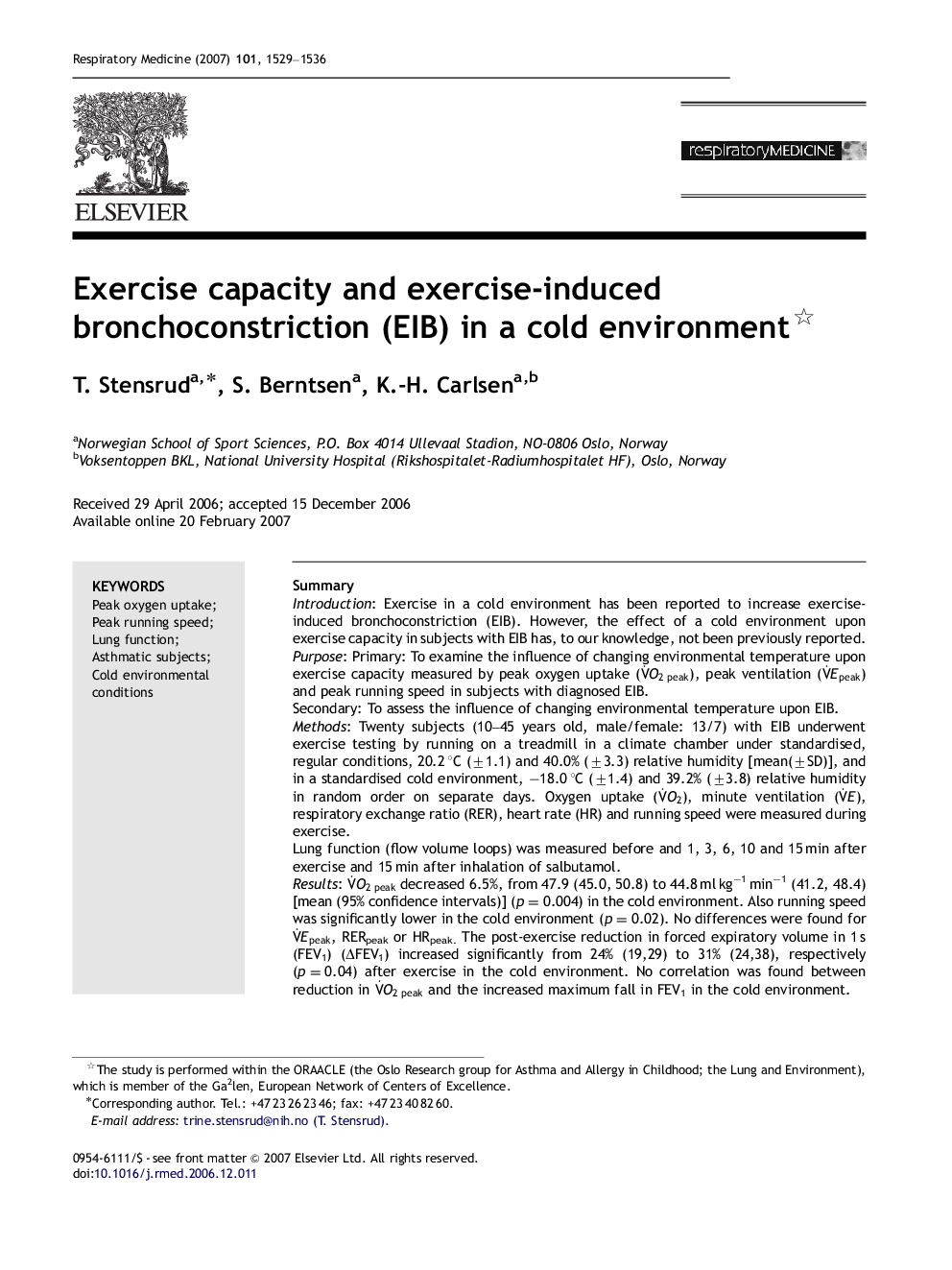| کد مقاله | کد نشریه | سال انتشار | مقاله انگلیسی | نسخه تمام متن |
|---|---|---|---|---|
| 4211710 | 1280649 | 2007 | 8 صفحه PDF | دانلود رایگان |

SummaryIntroduction: Exercise in a cold environment has been reported to increase exercise-induced bronchoconstriction (EIB). However, the effect of a cold environment upon exercise capacity in subjects with EIB has, to our knowledge, not been previously reported.Purpose : Primary: To examine the influence of changing environmental temperature upon exercise capacity measured by peak oxygen uptake (V˙O2peak), peak ventilation (V˙Epeak) and peak running speed in subjects with diagnosed EIB.Secondary: To assess the influence of changing environmental temperature upon EIB.Methods: Twenty subjects (10–45 years old, male/female: 13/7) with EIB underwent exercise testing by running on a treadmill in a climate chamber under standardised, regular conditions, 20.2 °C (±1.1) and 40.0% (±3.3) relative humidity [mean(±SD)], and in a standardised cold environment, −18.0 °C (±1.4) and 39.2% (±3.8) relative humidity in random order on separate days. Oxygen uptake (V˙O2), minute ventilation (V˙E), respiratory exchange ratio (RER), heart rate (HR) and running speed were measured during exercise.Lung function (flow volume loops) was measured before and 1, 3, 6, 10 and 15 min after exercise and 15 min after inhalation of salbutamol.Results : V˙O2peak decreased 6.5%, from 47.9 (45.0, 50.8) to 44.8 ml kg−1 min−1 (41.2, 48.4) [mean (95% confidence intervals)] (p=0.004) in the cold environment. Also running speed was significantly lower in the cold environment (p =0.02). No differences were found for V˙Epeak, RERpeak or HRpeak. The post-exercise reduction in forced expiratory volume in 1 s (FEV1) (ΔFEV1) increased significantly from 24% (19,29) to 31% (24,38), respectively (p =0.04) after exercise in the cold environment. No correlation was found between reduction in V˙O2peak and the increased maximum fall in FEV1 in the cold environment.Conclusion : Exercise capacity (V˙O2peak and peak running speed) was markedly reduced during exercise in a cold environment whereas EIB increased in subjects suffering from EIB.
Journal: Respiratory Medicine - Volume 101, Issue 7, July 2007, Pages 1529–1536